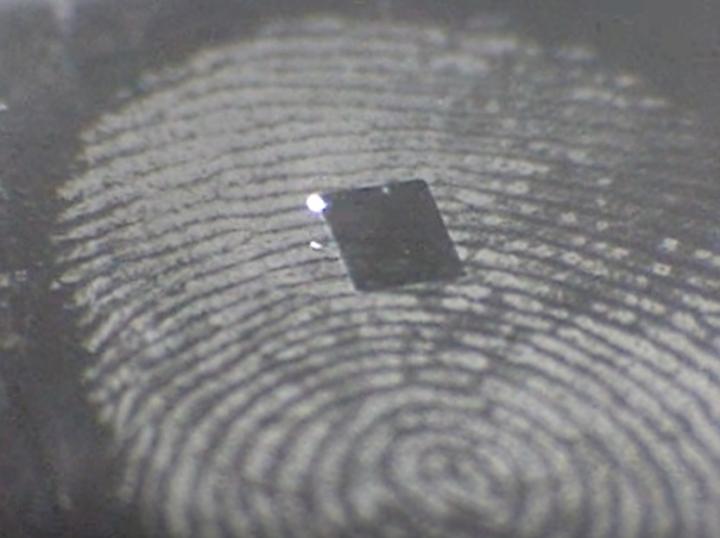Fingerprints have been used by police forces to identify people present at a crime scene for almost 150 years. But the marks left behind by fingers can hold more information than just the identity of the person who made them. Residues of any substances the person had been in contact with can also be transferred to surfaces they touch — but recovering and identifying those substances can be very difficult.

Researchers from Louisiana State University in Baton Rouge have now devised a method which, they believe, could help considerably with this problem. Inspired by team member Eden Camp’s time interring with the Louisiana State Police Crime Lab, chemistry professor Kermit Murray and postdoc Fabrizio Donnarumma applied their expertise in using infra-red lasers to lift minute layers of tissues for bioanalysis to the problem.
In a paper in the Journal of The American Society of Mass Spectrometry, Murray’s team describes how they found they could use their laser equipment to ablate away fingermarks from a surface, suck the resulting vapour into a thimble-sized filter system and then subject these captured materials to techniques such as gas chromatography of mass spectroscopy to identify what substances were present. The ablation works by rapidly and specifically vapourising any water in the fingermark, carrying any other trapped material off the surface. This preserves the integrity of chemical residues, Donnarumma said.
"We realised that if our techniques work for biomolecules as fragile as DNA and RNA, it should work with almost anything," he said. "We can capture almost anything that is on a surface. In this case, it just happened to be fingermarks." The prototype system they developed has been successful in ablating fingermarks on glass, plastic, aluminium and even cardboard, from which it is notoriously difficult to lift fingerprints, and has identified residues of substances including antiseptic cream, caffeine, condom lubricant and TNT. "We have been using infrared lasers for many years to ablate biomolecules from tissue samples for mass spectrometry, so we know that they are very efficient," Murray said. "Thanks to Eden's initiative, we now have a promising new application."
The technique might be particularly useful for bomb squads, the team said, helping them identify fingermarks left by people who had been in contact with explosives or their ingredients and also identifying which explosives had been used.
Murray is hoping to develop a portable system that uses fibre-optics to direct and focus the laser, expanding the geometry and type of surface it can be used on. "A laser beam is a straight line," Donnarumma said. "It can be difficult to focus a traditional laser system at a precise point, especially on an uneven surface. But if you run that laser through a flexible optical fibre, similar to how a fibre optic cable works, you can sample a wider variety of surfaces more easily."




Swiss geoengineering start-up targets methane removal
No mention whatsoever about the effect of increased methane levels/iron chloride in the ocean on the pH and chemical properties of the ocean - are we...